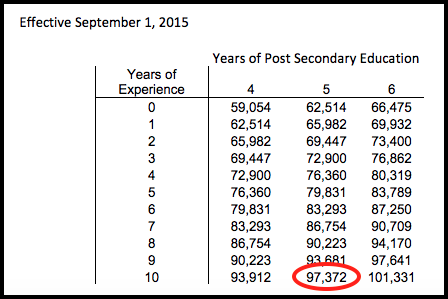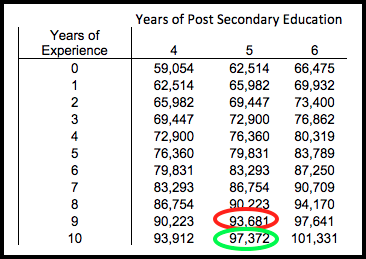A couple quick notes about government employee "pay freezes" in Alberta...
The Edmonton Journal reported today that the Notley government has reached a new deal with the Alberta Union of Public Employees (AUPE) – the largest union representing provincial government employees.
While details of the new deal are currently confidential, don’t be surprised if the government eventually claims it has negotiated “another pay freeze.”
What taxpayers need to note is that most of the “pay freezes” the government has announced to date aren’t really “pay freezes” for thousands of employees.
Why? Because thousands of those government employees are still receiving pay increases.
On the final page a recent freedom of information response we received from Alberta Health Services, it notes that the recent “pay freeze” for nurses will actually cost taxpayers $17 million this year alone – click here.
And in this news release from November 2017, we previously blew the whistle on how the government’s “pay freeze” for teachers will actually cost taxpayers an estimated $200 million. (Total between this school year and next)
These “pay freezes” are so costly because government employees often receive two types of pay increases. What the Notley government did was freeze one type of pay increase but not the other.
To see how it works, here’s a salary grid from the teachers’ contract with the Calgary Board of Education. If you were a teacher with nine years of experience back in 2014, and you had five years of schooling, you would have earned $91,844.
.png)
However, for the next school year, you would have been paid on a new salary grid, one with higher numbers throughout the grid.
But not only are all the numbers higher, because you now have one more year of experience under your belt, you would move to a new pay level. This is often known as a “step increase.”
In our example, the teacher who previously had nine years of experience would now move to the row that shows ten years of experience.
Thus, the teacher would have received $97,372 in 2015. That works out to a 6% increase in a single year.

What the government did with its new teachers contract is essentially freeze the numbers on the grid – meaning teachers don’t jump from one grid to a whole new grid the following year.
However, if you’re a teacher with less than 10 years experience, you’re still allowed to move within the current grid.
So if a teacher had nine years experience (red) they would move to the next level (green) the following year – from $93,681 to $97,372. This works out to a $3,691 pay increase ... a far cry from a “pay freeze.”

In 2017-18, the Calgary Board of Education noted that 3,772 of its teachers will receive this kind of pay increase – totalling $13.1 million ($14.6 million if you include the compounding effect the increase has on pension costs).
The nurses’ contract with AHS received the same kind of deal – no new salary grids, but employees can still move within their existing grid. I understand other health care employees received similar treatment.
Oddly enough, the government didn’t allow this type of pay increase for non-union employees. This Global New story notes their latest contract “also freezes any movement within employees’ salary grid.”
In conclusion, hopefully you can see the government's "pay freezes" are often anything but true "pay freezes."